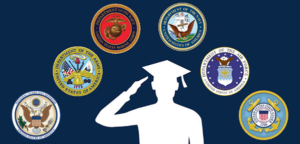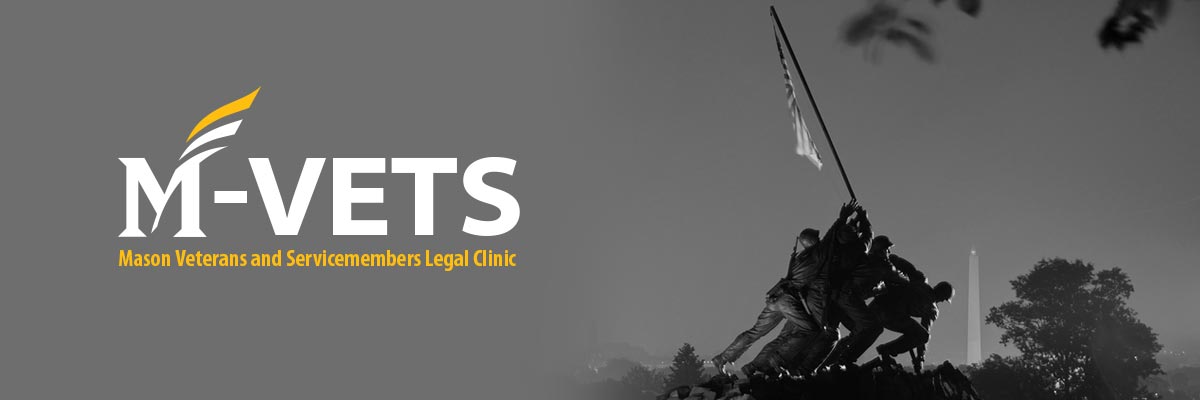
Summer 2018 M-VETS Student-Advisor David Kaplan
Servicemembers’ education benefits are an important incentive tool for the United States government to recruit and retain highly qualified persons for the armed forced. Ever since the initial adoption of the Servicemen’s Readjustment Act in 1944 [1], the quality of servicemembers’ education benefits remain in flux as the national interest in servicemembers’ issues waxes and wanes. Servicemembers’ education benefits are an important tool for building national strength and allow a servicemember to build their own personal strengths. In turn, a servicemember who can adjust to civilian society after serving in the military is likely to become a highly productive member of the population that can continue to contribute to national strength in their own post-service era. [2]Subsequently, the United States government and the public interest clearly has a need to precisely calculate the quality of servicemember’s education benefits a servicemember should receive after successfully completing a period of Honorable service.
Today’s servicemembers have several options to choose from while in service or post-service. Tuition assistance is available to all servicemembers in good standing with their assigned military units[3], although not as servicemember friendly as it should be. For example, tuition assistance is not available to obtain a PhD or a JD which I think is counterintuitive and cuts against the national interest. Even those servicemembers attempting to obtain a Master’s degree are limited to 39 credits worth of assistance. (See Department of Defense Directive (DODD) 1322.8E, DODIs 1322.25 and 1322.19; see also AR 621-5). Tuition assistance does not cover 100% of the cost of credits at many schools because of tuition prices and lateral or second degrees are already excluded from tuition assistance. Given that a PhD and JD are higher levels of education than a Master’s, I have to seriously question why the United States government would not want its servicemembers to attain higher-level degrees while in the service. The military is hard pressed to meet its recruiting goals because of several factors: the economy [4], criminal history requirements, mental[5] and physical fitness[6] requirements all preclude a large portion of the population from serving in the military.
Expanding the tuition assistance program and allowing servicemembers to use tuition assistance for a PhD or JD would be a step in the right direction and is something clearly authorized under the scope of authority granted to Congress in the United States Constitution. Additionally, so long as the servicemember is seeking a higher-level degree, the upper limit for credit hours covered by tuition assistance should be the amount required for the degree plus ten percent. Admittedly there are other options for a servicemember to obtain a degree, but tuition assistance is the most accessible and widely available to all servicemembers in good standing within their respective military units. Additionally, expanding tuition assistance would likely help those currently serving who’ve exhausted their GI Bill benefits obtaining a bachelors or who run out of GI Bill benefits mid-way through a PhD or JD program.
Expanding tuition assistance to all servicemembers in good standing for all upward degree progression without excluding PhD’s and JD’s is only one piece of the puzzle to help aid recruiting and retention. The Post 9/11 GI Bill is a significant improvement over its predecessor the Montgomery GI Bill. Part of the improved benefits of the Post 9/11 is the servicemember’s ability to shift the education benefit to a family member which comes with limitations. At the current time, the Department of Defense in a news release dated 12 July 2018[7] announced a policy reducing the transferability of the Post 9/11 education benefit, believing the benefit belongs to the servicemember specifically. Department of Defense officials cite a need to retain servicemembers. Once the benefit is transferred, the servicemember generally must continue serving for another four years from the date of the election in order for the election to be effective. [8] Servicemembers with more than 16 years of service are prohibited from transferring the GI Bill benefit. [9]
Given that people generally have freedom of choice so long as their choices are lawful, there is no good reason to limit a servicemember’s ability to transfer their earned education benefit to others. Once the servicemember successfully completes each enlistment contract honorably, their benefit has been re-earned after each period of service. To deny a person with more than 16 years of service the ability to transfer their benefits is not going to benefit the military. Additionally, restrictions on whom may receive the transferred benefit should be removed. Unless a fraud occurs such as a servicemember attempting to sell or trade their Post 9/11 benefits for some other personal benefit such as cash, or other consideration, the servicemember should be unlimited in who the benefit is transferred to so long as the transfer is done willingly, knowingly and intelligently. Some ideas to ensure the GI Bill benefit is properly transferred include JAG counseling and/or waivers to be completed to ensure the transfer is willing, knowingly and intelligent. Servicemembers don’t always serve for their own individual benefit; many serve for friends, family members and the public at large, thus transferring the education benefit should not be restricted as much as it is currently restricted. Servicemembers who don’t have a family and don’t desire to attend higher education or already have higher education shouldn’t lose out on the opportunity to benefit another person closely related by familial ties or through friendship or otherwise.
The Government and the public may benefit more by enacting a looser policy should the servicemember choose to transfer their benefit to another designated party. The designated party receiving the transferred education benefits gains the ability to obtain an education they may not otherwise be able to obtain, and the veteran still has their own years of service worth of experience which may be as valuable or more valuable than the potential to gain a post-secondary education. In effect the Government and the public gain two persons with enhanced capability to contribute to society whether thru public service or within private industry.
There is no one size fits all solution to servicemembers’ education benefits; however, legislators, the Secretary of Defense, service Chiefs for each respective branch and policy sharks should continue to explore different possibilities to create the environment where servicemember education benefits more widely available, more transferable and give more choice to the servicemember where possible. After all, it is the servicemember the public is interested in recruiting and retaining. To focus on one and not the other is a lack of foresight and will likely lead to an unbalanced force. Continuing to accept the status quo also leads to stagnation in ideas and does not serve to further the goals of the military, in this blog, namely recruiting and retention of servicemembers. For these reasons, the tuition assistance and Post 9/11 GI Bill programs should be expanded as I have articulated in this blog.
[1] Enacted June 22, 1944 by President Franklin Delano Roosevelt during World War II, the Servicemember’s Readjustment Act of 1944 enabled 2.3 million veterans to attend colleges and universities, 3.5 million received school training and 3.4 million received on-the-job training. In all, $14.5 billion was dispersed for education and training benefits through 1956. https://www.ourdocuments.gov
[2] The number of persons with bachelor’s degrees in the United States increased from 4.6% to 25% from 1945 to 50 years later and the number of persons with any degree doubled.
[3] See Department of Defense Instructions (DoDI) 1322.25
[4] Warner, John T., The Eleventh Quadrennial Review of Military Compensation, Chapter 2
[5] Vanden Brook, Tom, Army says USA TODAY story forced it to drop plans for waivers for high-risk recruits, USA Today 11/12/17 (implying that the Army was allowing mental health waivers to meet recruiting goals before rescinding policy allowing)
[6] Michaels, Jim, Physically fit recruits for Army are hard to find, USA today 01/10/18
[7] https://www.defense.gov/News/News-Releases/News-Release-View/Article/1573168/pentagon-announces-changes-to-post-911-gi-bill/
[8] Id.
[9] Id.

